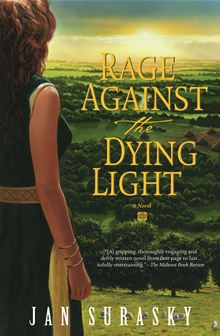Dr. Janet Gilsdorf’s brilliant debut novel, Ten Days (Kensington, September 2012) is an emotional novel that opens up the world of medicine from all angles.
Dr. Gildorf’s novel explores something she is quite familiar with in her work as a pediatrician specializing in infectious diseases, a topic that has been making tragic headlines recently, meningitis:
- The U.S. Center for Disease Control and Prevention has counted 419 cases of meningitis in 19 states linked to tainted steroid injections. At least 30 people have died. Hearings have been held on the deadly U.S. outbreak.
- Dr. Gilsdorf can advise people of the signs to look for and the realities of this terrible disease. She can also calm people by explaining the rarity of such cases and real statistics of meningitis.
- Dr. Gilsdorf can explore the doctor patient relationship from both sides. With healthcare being a primary concern of U.S. citizens, it is important to understand the best way to communicate with your doctor and your family.
- Dr. Gilsdorf can provide a window into a world that few know but many are fascinated by, the world of modern medicine and its impact on our lives.
In her novel, Ten Days, Dr. Gilsdorf portrays the world of medicine from both sides, that of a parent and a physician. What if a parent doesn’t recognize an illness in their child? What if they don’t seek medical attention quickly? What if one of the parents is a physician?
Ten Days introduces the reader to Anna and Jake. Although Anna and Jake Campbell interact with the world in very different ways, she as a cautious worrier and he as an optimistic realist, they successfully navigate the everyday problems that percolate through their marriage until the night their young son, Eddie, becomes ill. Anna has a bad cold and longs for the peace of evening and Jake, an orthopedic surgery resident, spends the night at the hospital, taking care of other people’s sick wives and children. As a result of their irreversible, achingly regrettable inactions, Anna and Jake face losing their child.
The characters in Ten Days represent the many parents and physicians Dr. Gilsdorf encounters during her work as a pediatrician. Dr. Gilsdorf is the Robert P. Kelch Professor of Pediatrics and Communicable Diseases at the University of Michigan, Director of Haemophilus influenza research laboratory, Director of the Cellular and Molecular Biology in Pediatrics Training Program and Co-Director of the Molecular and Clinical Epidemiology of Infectious Diseases.
Visit Janet Gilsdorf on her website and read her blog for insight into the world of medicine.




